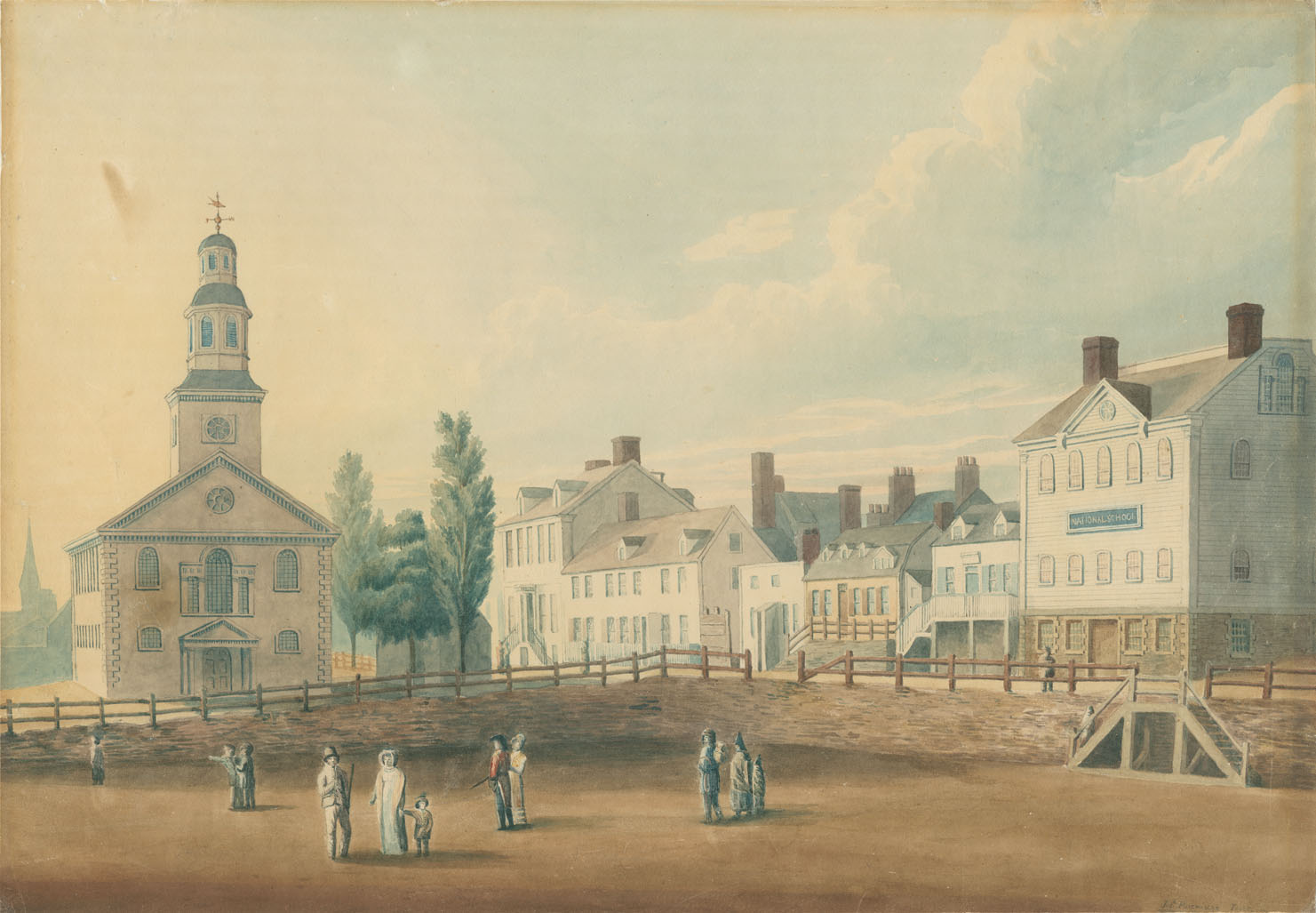Nova Scotia Archives
Halifax and Its People / 1749-1999
"National School at Halifax, NS", ca. 1819
This delightful Partridge watercolour, ca. 1819, shows a Halifax street scene still clearly identifiable some 180 years later – a splendid view of the Grand Parade, the Church of St. Paul and the west side of Argyle Street, highlighting the National School at the far right. The latter, founded under the patronage of the Earl of Dalhousie, then governor of Nova Scotia, opened in 1818, and was intended for children of all social classes, religious denominations and colour – and especially for the children of the poor. If a pupil could not afford the required books or stationery, or was inadequately clothed, these items were provided at the expense of the institution. The school also introduced the Madras System of education into the North American colonies, whereby senior scholars assisted the schoolmasters in teaching reading, writing, grammar, French, geography, arithmetic and mathematics. For the next 138 years this building was used for educational purposes. The Nova Scotia College of Art and Design was the last such occupant, vacating in 1956; in 1974 the building became the Five Fishermen Restaurant. Moving south along the west side of Argyle Street, the third building from the National School is the new Grand Theatre, later the Theatre Royal. Opened on this site in 1789, it was one of the oldest theatres on the continent when this watercolour was executed. The substantial three-and-a-half storey residence at the end of the Argyle street-scape was St. Paul's Parsonage, completed in 1809 during the appointment of the Rev. Dr. Robert Stanser. It was used as a rectory until sold in 1870, and although greatly altered by time, it remained in place until ca. 1984, when it was razed to make way for a parking lot.
Artist: Joseph Partridge
Date: ca. 1819
Medium: watercolour with touches of pencil and ink, 27 cm. x 39 cm.
Reference: Nova Scotia Archives 1979-147 no. 178 / negative: N-0328

